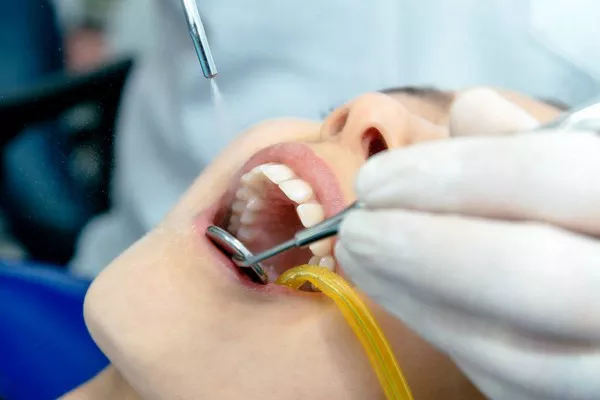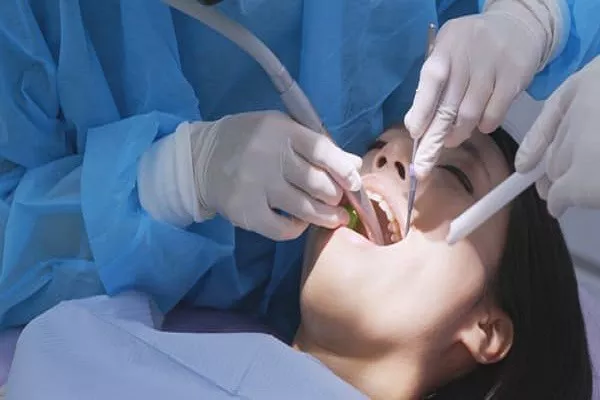Dental plaque is a common concern for oral health, and it’s often a topic of discussion during dental check-ups. While most people are familiar with the concept of plaque as a soft, sticky film that coats their teeth, there’s a common question that arises: can plaque harden and chip off? In this comprehensive article, we will delve into the nature of dental plaque, its transformation into a hardened form known as tartar or calculus, and the various implications this process has on oral health.
I. Understanding Dental Plaque
1.1 What is Dental Plaque?
Dental plaque is a biofilm consisting of bacteria, saliva, and food particles that adheres to the tooth surface. It is almost invisible when it first forms, making it difficult to detect without the aid of specialized disclosing solutions. The bacteria within plaque are responsible for producing acids that can erode tooth enamel, leading to cavities and other dental issues.
1.2 Formation of Plaque
Plaque continuously forms on your teeth throughout the day, especially after eating. Bacteria in your mouth thrive on the sugars and carbohydrates left on your teeth after meals. As they feed on these substances, they produce acidic byproducts that weaken tooth enamel and irritate the surrounding gum tissues.
II. The Hardening Process: From Plaque to Tartar
2.1 Plaque Mineralization
Over time, if dental plaque is not adequately removed through regular oral hygiene practices like brushing and flossing, it can undergo a process called mineralization. This occurs when minerals such as calcium and phosphate from saliva are deposited into the plaque, causing it to harden.
2.2 Formation of Tartar or Calculus
Once plaque mineralizes, it transforms into a hard, yellowish substance known as tartar or calculus. Unlike the soft and easily removable nature of plaque, tartar is firmly attached to the tooth surface and cannot be brushed or flossed away.
III. Implications for Oral Health
3.1 Dental Issues Associated with Plaque
Dental plaque serves as a breeding ground for harmful bacteria that can lead to various oral health problems, including:
Cavities: Plaque acids can erode tooth enamel, leading to cavities or dental caries.
Gum Disease: Accumulated plaque can irritate and inflame the gums, leading to gingivitis and, if left untreated, progressing to periodontitis.
3.2 Tartar’s Impact on Oral Health
Tartar, as a hardened form of plaque, poses its own set of challenges:
Tooth Decay: Tartar continues to release acids that contribute to tooth decay, making it even more challenging to maintain oral health.
Gum Disease: Tartar buildup can exacerbate gum disease, as the rough surface of tartar provides an ideal environment for bacteria to thrive and multiply.
Cosmetic Issues: Tartar can stain teeth, leading to visible discoloration and an undesirable appearance.
3.3 Tartar Removal
The removal of tartar requires professional dental intervention. Dentists and dental hygienists use specialized tools, such as scalers and ultrasonic devices, to carefully remove tartar deposits from tooth surfaces. Regular dental check-ups are crucial for detecting and addressing tartar buildup before it causes significant damage.
IV. Preventing Plaque and Tartar Buildup
4.1 Maintain a Robust Oral Hygiene Routine
To prevent the formation of plaque and its subsequent hardening into tartar, it is essential to maintain a consistent oral hygiene routine that includes:
Brushing: Brush your teeth at least twice a day using a fluoride toothpaste and a soft-bristle toothbrush.
Flossing: Floss daily to remove food particles and plaque from between teeth.
Mouthwash: Use an antimicrobial mouthwash to help reduce bacterial growth in the mouth.
4.2 Regular Dental Check-Ups
Routine dental check-ups are vital for early detection and removal of tartar buildup. Dentists can assess your oral health, perform professional cleanings, and provide guidance on maintaining good oral hygiene practices.
4.3 Dietary Choices
Limiting the consumption of sugary and starchy foods can help reduce the production of plaque-causing acids by oral bacteria. Additionally, drinking water after meals can help rinse away food particles and acids.
4.4 Tobacco and Alcohol
Avoiding tobacco products and excessive alcohol consumption can lower your risk of gum disease, as these substances can contribute to plaque buildup and gum irritation.
Conclusion
In summary, dental plaque is a common and naturally occurring biofilm in the mouth that can harden into tartar over time if not properly managed. Tartar poses significant risks to oral health, including tooth decay, gum disease, and cosmetic issues. To maintain optimal oral health and prevent plaque and tartar buildup, it is essential to follow a consistent oral hygiene routine, seek regular dental check-ups, and make healthy lifestyle choices. By understanding the process of plaque hardening and its implications, individuals can take proactive steps to protect their smiles and overall well-being.
Related Topics:





























